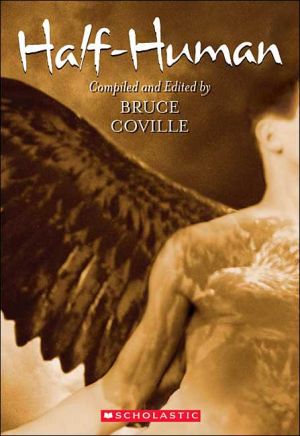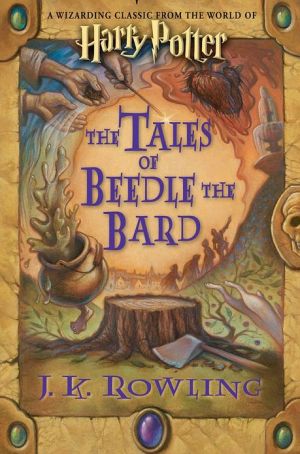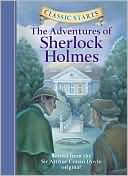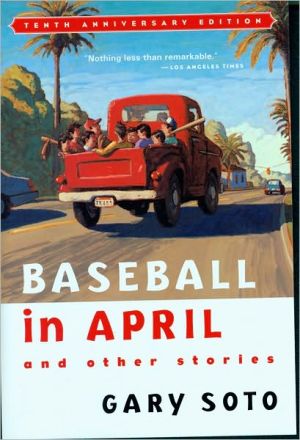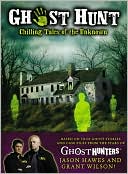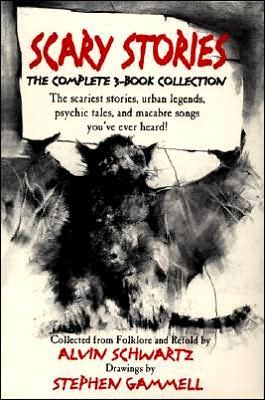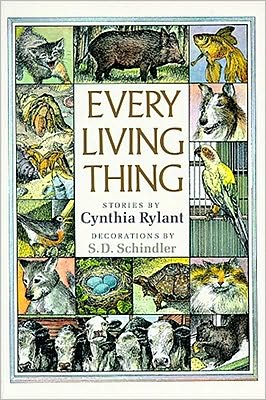Half-Human
A girl is born with the fire of dragon blood in her veins, and another longs for the feel of water against her skin. These are the stories of people who are not wholly human and the animals that are not purely animal. With stark emotion, and profound insight into humanity, contributing authors Bruce Coville, Jane Yolen, Tamora Pierce, Janni Lee Simner, and others explore the fantastic world of Selkies, Mermaids, Centaurs, and more.\ \ A collection of stories about such...
Search in google:
A girl is born with the fire of dragon blood in her veins and another longs for the feel of water against her skin. A scarecrow wonders at the world around him and a fallen angel tries to reclaim her family's soul.These are the stories about the people who are not wholly human and the animals that are not purely animal--beings that stand between the two worlds feeling the emotions, thrills, and confusions of both. Their struggle will be to find their true forms, and then meaning and purpose in their lives after the choice.Publishers WeeklyNine storytellers and a poet explore the bizarre and melancholy possibilities of being only partly human. In his introduction, Coville (the Unicorn Chronicles) admits these stories provide a "strange mirror," reflecting that part of the self that is not human. Several engaging tales of transformation, more lyric in quality, draw on fairytale or mythological conventions, such as a mermaid story by D.J. Malcolm, a tale of a tree spirit by Tamora Pierce and "Princess Dragonblood" (Jude Mandell). A pair of stories succeed as coming-of-age parablesD"Soaring" (Tim Waggoner), a tale of a modern-day Icarus set against a "traveling phantasmagoria," and "Water's Edge" (Janni Lee Simner) about a contemporary selkie. Other selections strain credibility, such as Gregory Maguire's "Scarecrow," which imagines the convoluted origins of the hero of Wizard of Oz, and Jane Yolen's "Centaur," in which a baby centaur is born in the barn of a family that names it after a departed child; however, Yolen's skill as a storyteller redeems her unusual tale. The collection closes with Coville's own complex story about an ancient woman who is half snake, yearning to be freed into mortality. These stories will likely grab the attention of readers who are exploring and developing their own sense of what it means to be human, but the tales vary in their ability to sustain readers' interest in the plight of the unusual creatures. Ages 8-14. (Nov.) Copyright 2001 Cahners Business Information.
\ Publishers Weekly\ - Publisher's Weekly\ Nine storytellers and a poet explore the bizarre and melancholy possibilities of being only partly human. In his introduction, Coville (the Unicorn Chronicles) admits these stories provide a "strange mirror," reflecting that part of the self that is not human. Several engaging tales of transformation, more lyric in quality, draw on fairytale or mythological conventions, such as a mermaid story by D.J. Malcolm, a tale of a tree spirit by Tamora Pierce and "Princess Dragonblood" (Jude Mandell). A pair of stories succeed as coming-of-age parablesD"Soaring" (Tim Waggoner), a tale of a modern-day Icarus set against a "traveling phantasmagoria," and "Water's Edge" (Janni Lee Simner) about a contemporary selkie. Other selections strain credibility, such as Gregory Maguire's "Scarecrow," which imagines the convoluted origins of the hero of Wizard of Oz, and Jane Yolen's "Centaur," in which a baby centaur is born in the barn of a family that names it after a departed child; however, Yolen's skill as a storyteller redeems her unusual tale. The collection closes with Coville's own complex story about an ancient woman who is half snake, yearning to be freed into mortality. These stories will likely grab the attention of readers who are exploring and developing their own sense of what it means to be human, but the tales vary in their ability to sustain readers' interest in the plight of the unusual creatures. Ages 8-14. (Nov.) Copyright 2001 Cahners Business Information.\ \ \ \ \ Children's LiteratureBruce Coville has put together a collection of ten unique short stories, all of which involve characters that are not fully human. Well-known authors such as Jane Yolen, Tamora Pierce and Lawrence Schimel are represented in the anthology. Some of the creatures depicted include a mermaid, a selkie, a dragon and even a tree that becomes a human being. By dramatizing characters that are partially another species, the authors are able to examine questions about identity and what it really means to be a human being. Fascinating morphed photographs accompany each story. 2001, Scholastic Press, $15.95. Ages 12 up. Reviewer:Christopher Moning\ \ \ VOYACoville's choice short story collection, combining myth, magic, mystery, and characters "who [are] like us, but not quite" explores the wonder and challenge of identity, independence, love, and sacrifice. Coville joins Jane Yolen, Tamora Pierce, D. J. Malcolm, Jude Mandell, Janni Lee Simner, Nancy Springer, and Tim Waggoner, whose characters' journeys center on universal dilemmas. A tree transformed into a man overcomes the fear of fire to save a young woman who must masquerade as a boy or die in Pierce's Elder Brother. Four girls in separate stories—gorgon, dragon, selkie, and mermaid—decide how their inherited differences define them. In Greg Maguire's Scarecrow, a scarecrow leaves rumor behind to seek truth on the yellow brick road. A young girl and a young man in different tales reconcile the myths of the centaur and Icarus with their modern worlds. A centuries-old grandson gives Coville's The Hardest, Kindest Gift, mortality, to his grandmother, a fallen angel. Defining theme and structure, Coville's introduction suggests booktalk approaches and classroom applications. Lawrence Schimel's poem "How to Make a Human," placed in the center of the collection, provocatively implies that humankind detached from nature is inept and destructive. Author information at the end of the collection includes suggestions for more fine reading. Theme and content parallel novels such as Donna Jo Napoli's Sirena (Scholastic, 1998/VOYA December 1998) and Crazy Jack (Delacorte, 1999/VOYA December 1998), Priscilla Galloway's Snake Dreamer (Delacorte, 1998/VOYA December 1998), and Katherine Roberts's Spellfall (Scholastic, 2001/VOYA December 2001). Although marketed for grades three to nine, thiscollection will captivate older young adult as well as adult readers, fantasy fans or not. VOYA CODES:5Q 5P M J S (Hard to imagine it being any better written;Every YA (who reads) was dying to read it yesterday;Middle School, defined as grades 6 to 8;Junior High, defined as grades 7 to 9;Senior High, defined as grades 10 to 12). 2001, Scholastic, 224p, $15.95. Ages 11 to 18. Reviewer:Lucy Schall—VOYA, December 2001 (Vol. 24, No. 5)\ \ \ \ \ School Library JournalGr 6 Up-In his introduction, Coville poses the question, "What is the source of this obsession with the half-humans? Why do we still, in our modern technological age, find ourselves fascinated by mermaids and their ilk?" He responds with, "Perhaps it is a recognition of our own divided nature." The 10 stories chosen for this book support this premise and are, for the most part, compelling and well written. Nancy Springer's "Becoming" gives an intriguing modern twist to the story of Medusa when 13-year-old Dusie reaches puberty and her hair turns into snakes. Tamora Pierce's "Elder Brother" explores the problems and emotions of a tree that becomes a man and the girl who befriends him. Those who have read Gregory Maguire's Wicked (HarperCollins, 1995; o.p.) will especially appreciate his "Scarecrow," which views the Wizard of Oz from still another point of view. Jane Yolen's "Centaur Field" poses the question of what would happen if a centaur were born today as a family attempts to protect their strange creature from the press and exploitation. Coville's concluding story, "The Hardest, Kindest Gift," takes on the legions of heaven and the fate of a fallen angel. These selections span a wide range of half-human creatures and will interest an even wider age range of readers.-Janet Hilbun, formerly at Sam Houston Middle School, Garland, TX Copyright 2001 Cahners Business Information.\ \ \ \ \ Kirkus ReviewsCentaurs, mermaids, and similar fantastic creatures populate the latest collection of short stories compiled by Coville. Ten noted fantasy authors take on a theme with a natural appeal to teens struggling with their own divided nature, both child and adult, yet neither. Many of the authors zero in on the dilemma of these "betwixt and between," with mythical halfbreeds who despise their foreign natures. Nancy Springer portrays a modern-day adolescent gorgon shamed by her changing body, while the heroine of Jude Mandell's "Princess Dragonblood" so loathes her fiery passions that she determines to slay her dragon sire. Other stories explore instead a restless yearning to escape humanity into the wholly other: Janilee Simner's captured selkie, aching for the sea; Tim Waggoner's Icarus-as-carnival-freak, tormented by his inability to fly; and, most poignant, Tamora Pierce's exploration of an apple tree's dilemma when accidentally transformed into a human. The most striking tales are also those loosely related to traditional models: Bruce Coville's haunting tale of the scion of a family tainted by faerie blood, and his quest to restore his ancestor's lost humanity; and Gregory Maguire's stunning rumination the ontological plight of the Scarecrow of Oz before his rescue by Dorothy. Strikingly similar in their wistful, poetic, and introspective moods, each story is prefaced by an equally mysterious photo collage (which unfortunately partly obscures the text of Lawrence Schimel's sharp-edged poem). A good choice for fantasy fans, or teachers looking to supplement a mythology unit. (Short stories. 10-14)\ \
